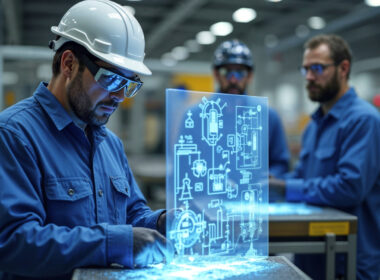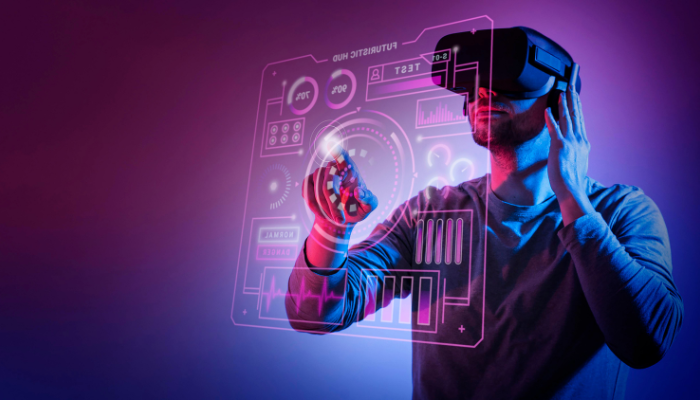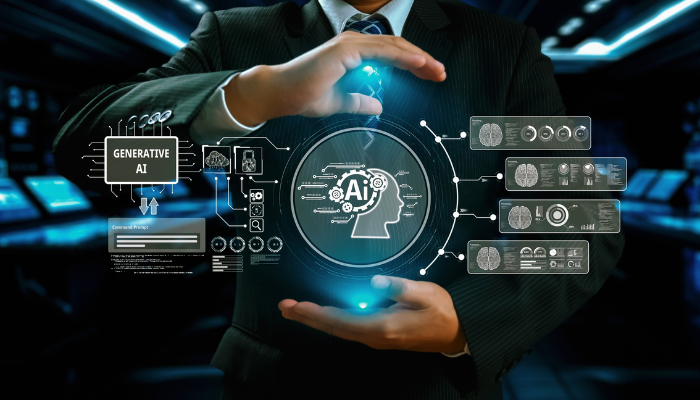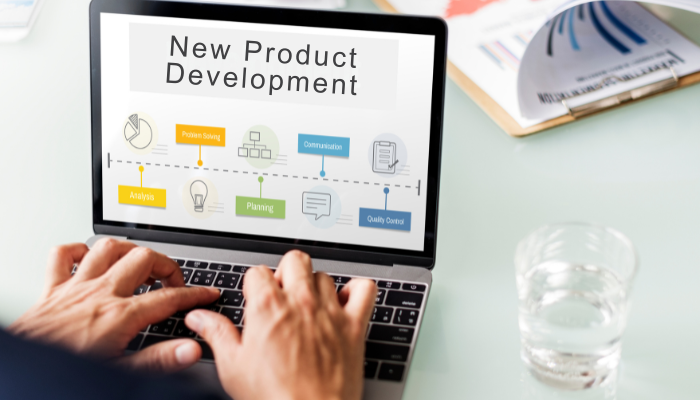Technology has come a long way. Today, thanks to the invention of virtual reality (VR) and augmented reality (AR), we can interact with a virtual world through a simple setup such as our browser. One technology that has flourished in this segment is WebXR, or Web Extended Reality.
Simply put, WebXR is the technology that allows you to experience both virtual and augmented reality directly through your web browser. It can render 3D content directly to devices that support VR and AR, which helps you engage with interactive, lifelike environments.
For businesses, this means creating an immersive experience for customers without the need for users to download special apps or purchase expensive software. For example, you can display products in a virtual showroom or allow customers to visualize furniture in their homes through AR. All it requires is a device that supports VR or AR.
Did you find it exciting and want to know how Web Extended Reality works? The technology relies on WebXR Device API, which acts as the engine behind the scenes. Let’s take a look at this in detail.
How Does WebXR Work?
The WebXR Device API controls how 3D content is displayed. It manages frame rates and motion tracking to give a smooth experience to users. This API connects with the hardware (like VR headsets or AR-enabled phones) to make sure everything runs efficiently.
Consider this scenario for example, when someone moves their head while wearing a VR headset, the API quickly adjusts the scene to reflect that movement. This creates a seamless, real-time experience.
Are you ready to enhance your user experience? Codewave specializes in XR development, creating immersive solutions that engage customers like never before. Explore our XR services to know more.
So, we understand that WebXR Device API is the backbone of how AR and VR experiences come to life in your browser. Its role is simple but powerful—it allows you to access AR and VR devices directly through the web. Let’s look at its features to further understand how it works.
WebXR Device API Features
Let’s dive deeper into the key features of the WebXR Device API:
1. XRView: Bringing the Virtual World to Life
Think of XRView as the camera for your virtual world. It’s responsible for controlling what the user sees, based on their position and movements. XRView ensures that users can look around and interact with a 3D environment as if they were physically present.
Imagine your customer using an AR app to visualize furniture in their living room. As they move their smartphone around, XRView adjusts the perspective in real time, making it feel as though the furniture is truly sitting in the room.
For businesses, this means you can offer your customers a truly immersive product visualization without requiring expensive hardware. Whether it’s a VR headset or an AR-enabled phone, XRView ensures a seamless experience that keeps users engaged and makes your product or service stand out.
2. XRPose: Aligning Virtual Objects with the Real World
While XRView controls what the user sees, XRPose handles the precise positioning and orientation of objects within the scene. This feature ensures that virtual objects stay anchored correctly within the user’s physical environment.
For example, in a virtual showroom scenario, if a customer is looking at a digital car model, XRPose ensures that the car stays in place as the user walks around it, just like in real life. Even as the user changes their angle or moves, XRPose aligns the virtual object accurately, ensuring that the experience remains natural and convincing.
This precise positioning is critical for industries like retail, real estate, or automotive, where the spatial accuracy of product placement can enhance user experience and drive conversions. With XRPose, businesses can deliver interactive, lifelike experiences that capture customers’ attention and build trust in the product.
3. Device Integration for Smooth User Interaction
The WebXR Device API’s strength lies in its seamless integration with different types of hardware, whether it’s a high-end VR headset, AR glasses, or a simple smartphone. The API adapts to the device’s capabilities, ensuring users get an optimized experience, no matter what hardware they’re using.
This feature is a game-changer for businesses. It means you don’t have to develop different versions of your app for different devices—WebXR ensures that your content works across platforms, reducing development costs while increasing your reach. Your customers, regardless of the device they use, will be able to engage with your brand’s AR or VR experiences without the hassle of downloading apps or buying expensive equipment.
4. Real-Time Interaction with the Physical World
The WebXR Device API makes full use of the hardware’s sensors to track user movements in real time. Whether it’s the gyroscope, accelerometer, or position trackers, these sensors ensure that user movements, such as head turns or steps taken, are captured with pinpoint accuracy.
Consider a user in a VR environment for a virtual property tour. As they walk around the virtual space, the WebXR Device API tracks their every movement, updating the scene dynamically. This real-time interaction creates a fully immersive experience, making users feel like they are actually in the property they are viewing.
For businesses in industries like real estate, this means you can offer virtual tours that feel real, increasing user engagement and shortening the sales cycle by giving customers an immediate sense of what your property offers—right from their home.
5. Accessibility Through Web Browsers
Perhaps the most transformative feature of the WebXR Device API is its ability to deliver these immersive experiences directly through a web browser. There’s no need for customers to download separate apps or install any software. With a single click, users can dive into an AR or VR experience, dramatically lowering barriers to entry.
This kind of accessibility makes WebXR a powerful tool for businesses looking to provide frictionless customer experiences. Whether you’re in retail, healthcare, or entertainment, this technology allows you to reach a larger audience with minimal effort. All a user needs is a compatible device and a web browser to engage with your brand’s virtual or augmented reality content.
Speaking of AR, check out these Key Trends and Innovations in Augmented Reality for a better understanding of the technology and its applications.
As we can see, the world of immersive technology has evolved rapidly. However, most people only know about WebVR which first brought Virtual Reality to web browsers. While WebVR allowed users to experience VR directly from a website, it was limited in scope. So, how does it differ from WebXR?
Transitioning from WebVR to WebXR
When WebVR was introduced, it only supported VR content, leaving out Augmented Reality, which was becoming more popular. So, WebXR supersedes WebVR by supporting both VR and AR. It combines the best of both worlds into one standard.
| Feature | WebVR | WebXR |
| Device Compatibility | Limited to VR headsets | Supports VR headsets and AR-capable devices (e.g., smartphones, AR glasses) |
| Development Complexity | Separate VR and AR development are required | Unified framework for both VR and AR |
| API Standardization | Specific to VR content | Standardized for both AR and VR, simplifying development |
| Future | Limited scalability as AR demand grows | Future-ready with support for a wide range of immersive devices |
| User Experience | VR-focused, less versatile | Enhanced flexibility with seamless transitions between AR and VR experiences |
Now, what can Web Extended Reality do for your business? To understand, you must first grasp its technological capabilities.
Technological Capabilities
WebXR brings cutting-edge technology to the web. It gives businesses the ability to deliver memorable experiences without needing any dedicated apps or complex installations. Let’s see how:
Rendering Real-Time Stereoscopic Views
One of the standout features is its ability to render real-time stereoscopic views, which allows users to see 3D content with depth and dimension.
- Whether someone is using a VR headset or an AR-enabled smartphone, it ensures that the visuals are realistic and fully responsive to user movement.
- It delivers an experience that feels natural by tracking the position of both the headset and controllers.
- As a user moves their head, the content adjusts to match their perspective, which makes it feel like they’re physically present in the scene.
For example, when a user reaches out with a controller to pick up an object in a VR game, the movement happens smoothly through precise motion tracking.
Device Compatibility
Another key advantage is its compatibility with a wide range of devices. Whether people are using a high-end VR headset, AR-enabled eyeglasses, or a simple smartphone—it can handle them all.
- This compatibility is useful for businesses as they can reach a larger audience without any device limitations.
- This also means that the customers, no matter their setup, get to engage with your brand in exciting and interactive ways.
JavaScript APIs for Enhanced Device Interaction
Another key strength is its smooth integration with JavaScript APIs. This makes it easier for developers to manage device interactions.
- Through JavaScript, WebXR can access device sensors like gyroscopes, accelerometers, and position trackers to offer accurate and real-time user movement tracking.
- This allows users to interact naturally within VR and AR environments, whether they are using headsets, controllers, or even just their smartphones.
For example, a user in a VR setting can turn their head, move around, or use hand gestures, and it will track these movements in real-time, thanks to JavaScript APIs.
You must be now wondering where you can use Web Extended Reality in your business case scenarios. As the technology requires no app stores or long installations, it opens up enormous potential for different use cases.
Applications and Use Cases
One of the most powerful features is its ability to be instantly deployed on web browsers. It acts as a lifesaver for businesses looking to deliver engaging, cutting-edge experiences quickly and seamlessly. Here is how:
1. AR Art Installations
An exciting application is in the world of AR art. With this technology, users can view AR-enhanced artworks directly through their smartphones or tablets by overlaying digital elements onto their surroundings.
- Imagine a scenario where your customers are walking through a gallery that merges physical and digital art, or experiencing an interactive art installation from the comfort of their living rooms.
- These installations offer a unique way to engage audiences and allow artists to reach a global audience.
Users can immerse themselves in the digital world with something as simple as scanning a QR code or clicking on a link.
2. VR Education Tools
Education is another area where WebXR is making a significant impact. VR education tools are giving students and professionals the chance to learn through immersive, hands-on experiences. For example:
- Offering a virtual biology lab where students can interact with 3D models of the human body
- Creating a historical simulation where learners can explore ancient civilizations.
Educators can provide high-quality, interactive learning experiences without needing expensive equipment or dedicated apps.
3. Game Development
The gaming industry is another field where it is making waves. Developers can now create VR and AR games that run directly in a browser.
- Players can jump right into an immersive gaming experience, whether it’s a simple AR puzzle game or a fully interactive VR world.
- This instant accessibility helps businesses and developers engage users through gamified experiences—whether it’s for entertainment, education, or even marketing purposes.
Struggling with user engagement? At Codewave, our UI/UX design services prioritize user-centered design, ensuring that your WebXR applications are not only functional but also enjoyable to use. Through user research and usability testing, we help you create intuitive interfaces that engage users, making your applications more appealing.
Web Extended Reality’s applications are diverse, spanning from art and education to gaming and beyond. Now how do you utilize WebXR for your projects? Don’t worry, as the technology offers accessible tools that can bring your virtual and augmented ideas to life.
WebXR Frameworks for Development
The technology provides a variety of development frameworks, each tailored to different skill levels and project types. It can be helpful, whether you’re just getting started or you’re an experienced developer. Let’s see what frameworks are compatible:
WebXR-Compatible Frameworks
Several popular frameworks are available, making it easy to build immersive experiences. Let’s take a look at three of the most widely-used frameworks:
- A-Frame
A-Frame is one of the most beginner-friendly frameworks. It’s built on top of HTML and allows you to create VR and AR scenes using simple tags. So, A-Frame is perfect if you’re just starting out or want to prototype quickly.
Using its easy-to-understand syntax, you can create a VR experience in a matter of minutes by simply embedding code into a webpage.
If you’re starting out, this guide on XR Design and Development for Beginners can be useful. Find out all about the possibilities and fundamentals of extended reality (XR) through this extensive article.
- Babylon.js
For more complex projects, Babylon.js is a powerful option. Babylon.js is a JavaScript framework for building 3D applications, with built-in support. It offers a range of tools (asset manager, advanced lighting systems) that allow developers to manage 3D assets, physics, and lighting. Hence, it’s ideal for both gaming and business applications.
- Three.js
Three.js is known for its flexibility and performance. Three.js is well-loved by developers who need more customization options even though it has a steeper learning curve than A-Frame. It’s perfect for building complex, interactive 3D scenes and visualizations that run smoothly in browsers.
Conclusion
WebXR is paving the way for immersive experiences in both Augmented Reality (AR) and Virtual Reality (VR). By bridging the gap between AR and VR, it offers a future-proof solution that doesn’t rely on app stores or specialized software.
As the technology continues to evolve, ongoing developments and collaboration improve its reliability. This way, the technology stays relevant, adaptable, and more capable of delivering high-quality immersive experiences.
Businesses can confidently invest in such technologies to offer scalable experiences to their users without worrying much about compatibility issues or technological limitations. As you explore the potential of WebXR for your business, consider partnering with Codewave.
With Codewave’s expertise in design-led tech development, we can help you create innovative solutions tailored to your needs. Whether you’re looking to launch a new product, improve user engagement, or streamline your operations, we have the skills and insights to turn your vision into reality.
Don’t miss out on the opportunity to elevate your brand in the digital space. Visit Codewave today to learn more about our services.
Codewave is a UX first design thinking & digital transformation services company, designing & engineering innovative mobile apps, cloud, & edge solutions.







